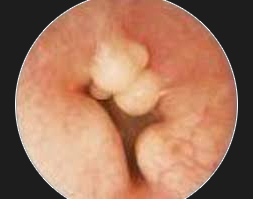Surfers Ear [Exostosis]
Surfers Ear (Exotosis) is a common but preventable condition of the ear. Wind & water exposure creates bony growths within the ear canal trapping water & debris which can cause painful infections. In advanced cases treatment is only by surgical operation.
General Description
Exostosis is the medical term for an abnormal growth of bone within the ear canal. It is more commonly referred to as swimmer’s or surfer’s ear. This common name derives from the fact that the most common cause of exostosis is frequent exposure to cold water, making this a condition that affects surfers at a higher rate than the average population. Exposure to wind and cold water causes the bone surrounding the ear canal to thicken and constrict the ear canal, sometimes to the point of complete blockage (known as “occlusion”) which can lead to substantial conductive hearing loss. An exostosis growth can result from any activity that exposes the participant to cold, wet and windy conditions such as skiing, kayaking, fishing, sailing or diving. Most patients who develop an exostois are in their mid-to-late 30s but those with significant cold water exposure such as surfers can develop the condition earlier. This is due to the slow progression of bone growth from years of cold weather exposure.
 What Causes it?
What Causes it?
In colder water & prevailing wind conditions Surfers Ear becomes more common, the combination of wet skin layers & wind produces a refrigeration effect within the ear promoting blood to flow to the affected area resulting in the layering down of new bony growth (exostoses) which ultimately narrows the ear canal.
 Will I Get Surfer’s Ear?
Will I Get Surfer’s Ear?
The more frequently you expose the ear to this environment the more likely it is that Surfers Ear will develop. Surfers Ear can become apparent after as little as five years of regular extreme water sport. The type, number & severity of the growths vary between individuals. The incident of Surfers Ear has increased with improvements in modern wetsuits design; individuals are in the water for longer, especially during the winter when lower temperatures & prevailing winds create a higher risk of developing this condition.
How do I know if I have Surfer’s Ear?
A feeling of fullness or difficulty clearing water from the ears after surfing or water sport is a possible indication of developing Surfers Ear as is painful or recurrent ear infections. Your local Audiologist or Doctor will be able to confirm the presence of Surfers Ear by a simple ear examination. Contact our partner Kernow Ear Care to have an assessment of your ear health sarah@kernowearcare.co.uk or call 01637 520397
Is Exostosis Preventable?
Exostosis is preventable by following some basic safety precautions.- Use custom ear protection to prevent cold water exposure if cold or windy conditions are going to be common experiences such as with surfing or wind surfing. Custom ear plugs are created by making an impression of the ear canal and creating a plug that is customized to the individual patient. These plus are more comfortable and work better than over-the-counter one-size-fits-all solutions.
- Avoid activity during extremely cold or windy conditions.
- Use a swim cap or hood in addition to the ear plugs mentioned above.
 What is a normal ear canal?
What is a normal ear canal?
The normal ear canal is 5-8mm in diameter (about as thick as a pencil). As the narrowing of the canal from exostosis progresses, this diameter gets substantially reduced, to the point of total closure if the exostosis remains untreated. Exostosis in not necessarily harmful by itself, but the ear canal construction from the bony growth can trap cerumen (ear wax) and other debris within the ear canal, which may lead to repeated ear infections.
What are the symptoms and treatment of Exostosis?
Exostosis symptoms of include a decrease in hearing sensitivity possibly combined with an increased prevalence of ear infections. Early symptoms include water trapping in the ear canal after swimming. Sometime thereafter, debris trapping and infections make surgery necessary. Exostosis is most commonly treated by a surgical procedure to remove the growth. There are two different approaches to the surgery, the first uses a small incision behind the ear and the excess bone growth is removed using a surgical drill, and the second uses a drill to remove the bone growth from inside of the ear canal itself.. After the surgery, it is important for the patient to avoid any cold water activities for 2-6 weeks in order to prevent complications or infections. Can Exostosis return even after surgery?
Can Exostosis return even after surgery?
Repeated cold water & wind exposure can cause regrowth of bone, but after surgical removal it is extremely rare to need the procedure a second time.
Will Exostosis improve if left untreated?
No. The bone growth is irreversible once formed. Exostosis: The Facts
Exostosis: The Facts
In general, one ear may be much worse than the other. If so, this may be due to the prevailing wind direction in the areas most visited by the patient. The widespread use of better wetsuits and dry suit technology has allowed people to participate in water sports in much colder waters, likely increasing the incidence and severity of exostosis for those who do not use proper ear protection. Cold water surfers experience exostosis at a rate 600 % higher than warm water surfers. The colder the water, the quicker exostoses grow.
Conclusion
Exostosis is difficult to diagnose and manage without a comprehensive medical examination and specialty care from an Otologist, who is an otolaryngologist (ENT) who has undergone two additional years of training and specializes in hearing only. With appropriate medical treatment and therapy, individuals with auditory neuropathy can fully function in a hearing world.
